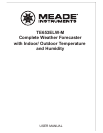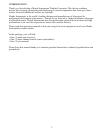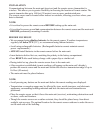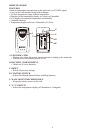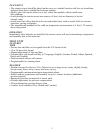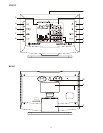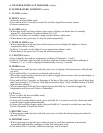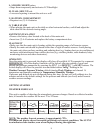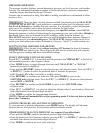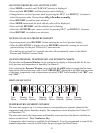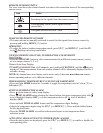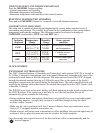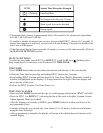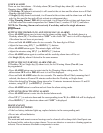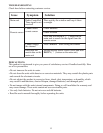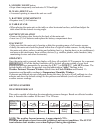
PLACEMENT
• The remote sensor should be placed under eaves or a similar location with free air circulation,
sheltered from direct sunlight and extreme weather.
• Ideally, place the remote sensor over soil, rather than asphalt, which would cause
false readings.
• Avoid placing the remote sensor near sources of heat, such as chimneys or hot air
exhaust vents.
• Avoid areas that collect heat from the sun and radiate heat, such as metal, brick or concrete
structures, paving, and patios.
• The international standard for the valid air temperature measurements is 4 feet (1.25 meters)
above the ground.
OPERATION
Immediately after batteries are installed, the remote sensor will start transmitting a temperature
and humidity data to the main unit.
MAIN UNIT
FEATURES
TIME
• Precise time and date set via signals from the US Atomic clock
• 12 or 24 hour time format
• Manual adjustment of time and date
• Calendar date with month and day in 7 languages English, German, French, Italian, Spanish,
Dutch and Swedish
• Dual crescendo alarms with snooze
• Programmable ice warning alarm
WEATHER
• Weather forecast for the next 12 to 24 hour in seven large icons: sunny, slightly cloudy,
cloudy, rainy, heavy rainy, snowy and heavy snowy.
• Programmable minimum/maximum temperature alarm
• Indoor/outdoor temperature and humidity in up to 3 remote locations (additional
sensors required)
• Barometric pressure in imperial or metric units
• Altitude adjustment for pressure compensation
• 24 hour barometric pressure history chart
• Comfort level indicators (Dry, Humid and Comfort)
5
MADEINCHINA



